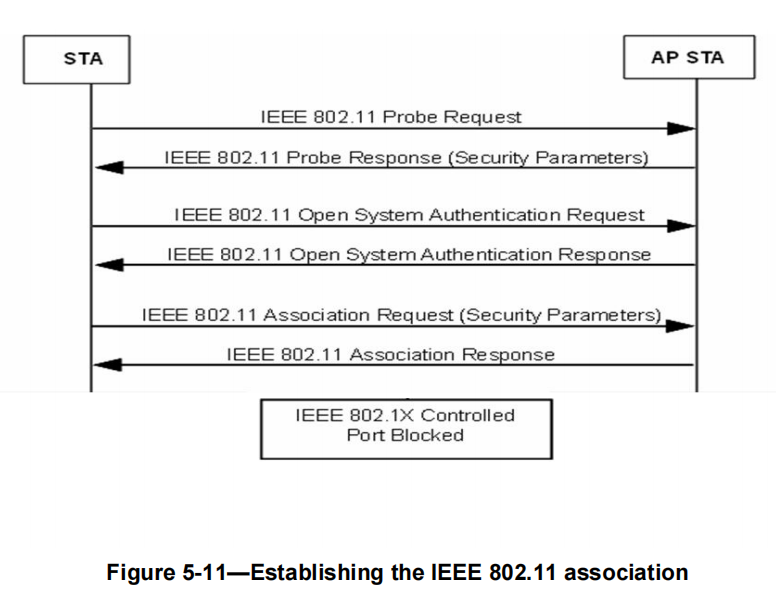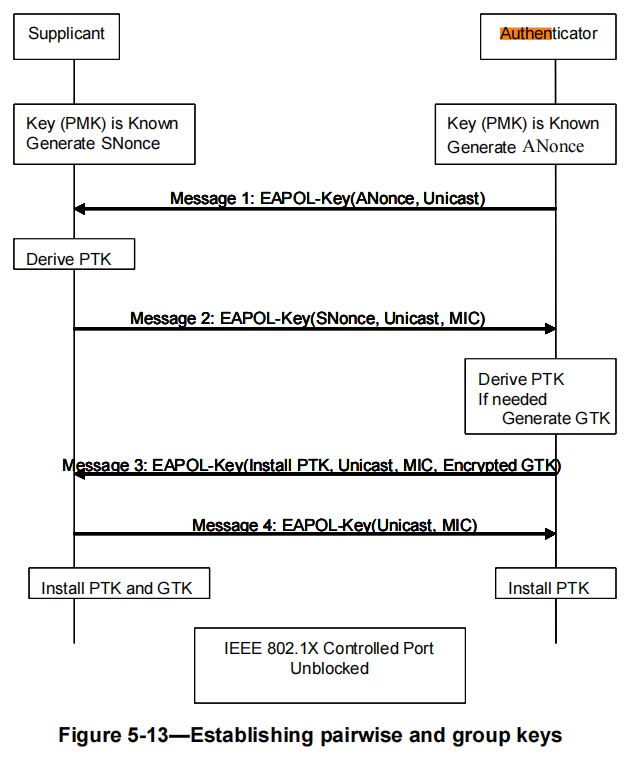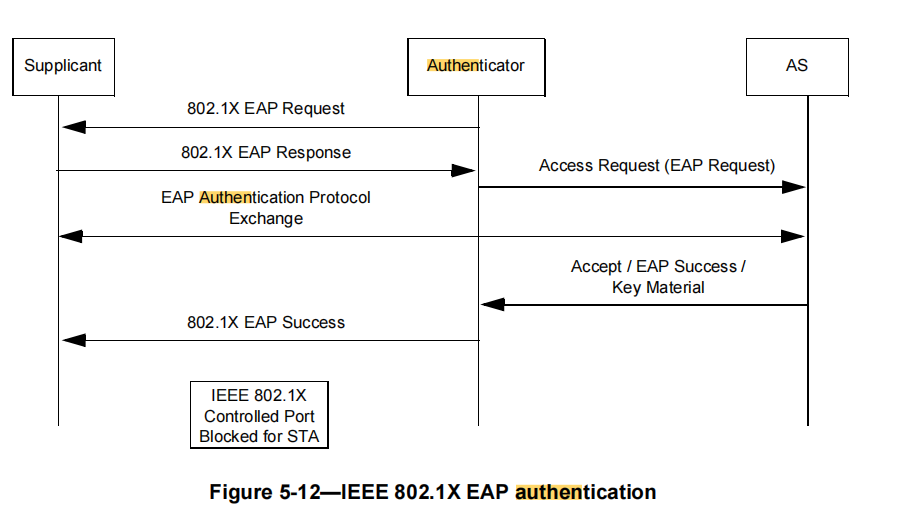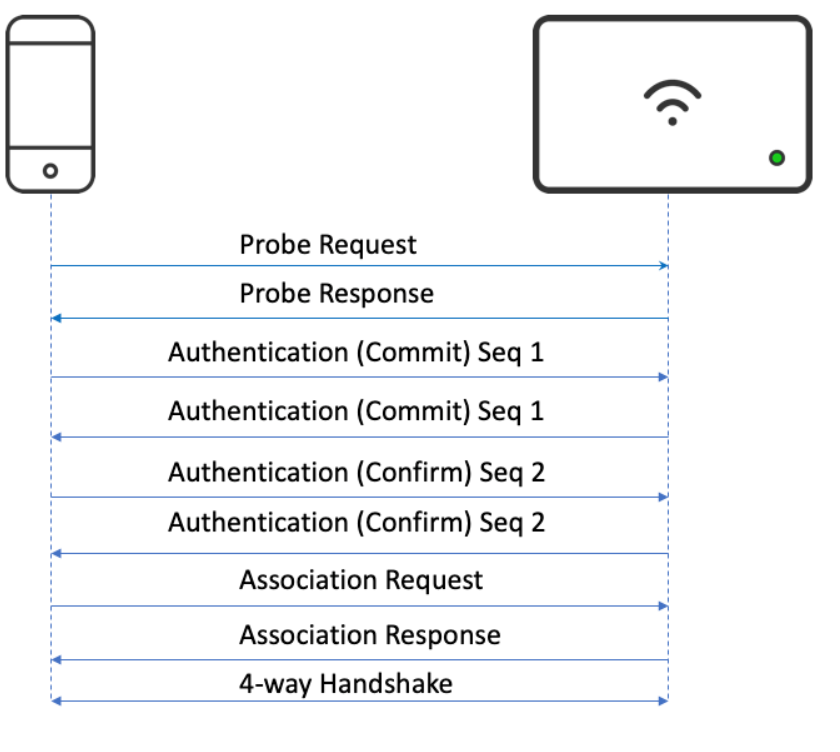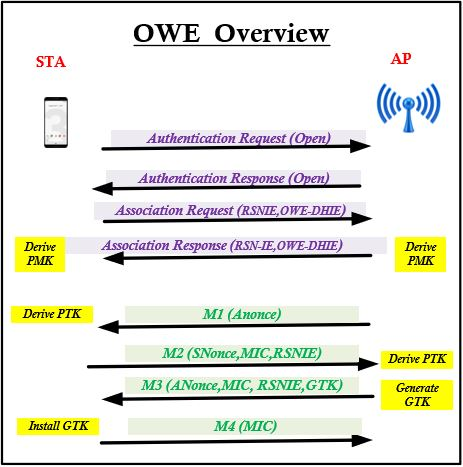目录
IEEE 802.11定义了2个阶段:pre-RSNA, RSNA
RSNA:robust security network association
总结:目前WPA3进入强制阶段,所有新的WiFi设备都必须支持WPA3,6G频段直接去掉了open的支持,强制WPA3。
WPA是什么?
WPA:WiFi protected Access
IEEE 802.11一开始就内置了安全协议,包括WEP(wired equivalent privacy),shared key authentication等,但是大家很快就发现这个安全太脆弱。
2003年,WiFi联盟基于802.11i draft3先做了WPA(WiFi Protected Access);
2004年802.11i正式发布后,WiFi联盟更新为WPA2;
2018年,WiFi联盟再次更新为WPA3。
如果没有安全的话,我们的WiFi就像裸奔一样。附近的人通过捕捉空中的报文(air sniffer),可以轻松的激活成功教程我们的各种卡号密码。因此通信安全是至关重要。
安全是什么?
安全= 认证+加密
security = authentication+encryption.
- authentication 认证:你是谁?
- encryption 加密:加密数据,避免被激活成功教程。
note:实际执行中,这2个会经常混在一起,比如在认证的时候,就需要加密数据,避免激活成功教程等。
但是我们考虑安全的时候一定要从这2个角度出发。
IEEE 802.11定义了2个阶段:pre-RSNA, RSNA
Pre-RSNA:
- encryption:
- WEP (已淘汰,不赘述)
- authentication:
- Open :最最基本的,下图为最基本的连接过程:probe,authentication,association
- shared key (已淘汰,不赘述)
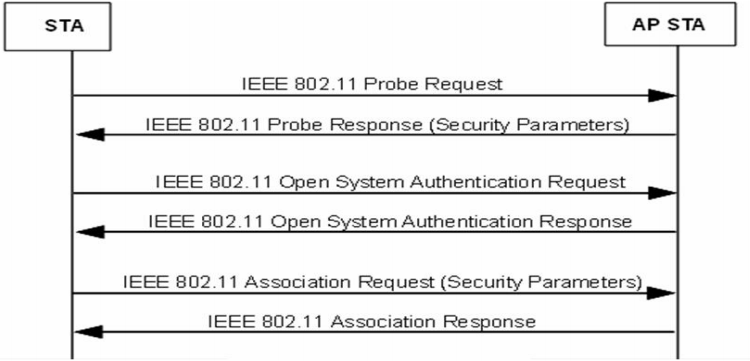
RSNA:robust security network association
RSNA Authentication:
PSK:Preshared Key,使用最广泛。
- EAP-TLS
- EAP-PEAP/MSCHAPv2 (both PEAPv0 and PEAPv1)
- EAP-PEAP/TLS (both PEAPv0 and PEAPv1)
- EAP-PEAP/GTC (both PEAPv0 and PEAPv1)
- EAP-PEAP/OTP (both PEAPv0 and PEAPv1)
- EAP-PEAP/MD5-Challenge (both PEAPv0 and PEAPv1)
- EAP-TTLS/EAP-MD5-Challenge
- EAP-TTLS/EAP-GTC
- EAP-TTLS/EAP-OTP
- EAP-TTLS/EAP-MSCHAPv2
- EAP-TTLS/EAP-TLS
- EAP-TTLS/MSCHAPv2
- EAP-TTLS/MSCHAP
- EAP-TTLS/PAP
- EAP-TTLS/CHAP
- EAP-SIM
- EAP-AKA
- EAP-AKA’
- EAP-FAST
- EAP-PAX
- EAP-SAKE
- EAP-IKEv2
- EAP-GPSK,etc.
RSNA Encryption:
RSNA VS WPA and WPA2
WiFi联盟的WPA 和WPA2对应IEEE RSNA。2003年,WiFi联盟基于802.11i draft3先做了WPA(WiFi Protected Access);2004年802.11i正式发布后,WiFi联盟更新为WPA2;
因为WPA主要使用TKIP,随着TKIP被淘汰,WPA也随之淘汰。
为什么要WPA3?
WPA2已经保护了WiFi 十多年,2018年左右,突然有个Crack攻击,导致WPA2被激活成功教程,为了应对这个安全隐患,WiFi联盟更新了WPA3。
目前有几个版本应对不同的场景:
- WPA3-SAE:优化WPA2-PSK,原来authentication是Open,现在增强了authentication的交互。
- WPA3-Enterprise:针对企业环境,增加Suite-B,将密码算法提升至192位。
- WPA3-OWE:针对机场等原来使用EAP-Open的场景,验证手机号之后,不加密,安全隐患很大。强制open环境下也进行加密,保证通信安全。
WPA3-SAE
WPA3-SAE:Simultaneous Authentication of Equals (SAE) upon WPA2 PSK.
注意看中间authentication的4个包,是与WPA2的主要区别。
-
Authentication (Commit) from STA to AP
-
This packet is an 802.11 authentication frame.
-
Commit will include SAE authentication Seq Number 1 with a scalar and an element not related to the password to be used.
-
This is used to generate the PMK (Pairwise Master Key) on the STA.
-
-
Authentication (Commit) from AP to STA
-
This packet is an 802.11 authentication frame.
-
Commit will include SAE authentication Seq Number 1 with a scalar and an element not related to the password to be used.
-
This is used to generate the PMK (Pairwise Master Key) on the AP.
-
-
Authentication (Confirm) from STA to AP
-
This packet is an 802.11 authentication frame.
-
Confirm includes Seq Number 2 with confirm message with key generated for AP to validate.
-
-
Authentication (Confirm) from AP to STA
-
This packet is an 802.11 authentication frame.
-
Confirm includes Seq Number 2 with confirm message with key generated letting STA know the key is correct or rejecting the authentication.
-
WPA3-OWE
Opportunistic wireless encryption
association之前的过程是WPA2一样,只是后面强制进行4-way handshake,加密数据。
总结:目前WPA3进入强制阶段,所有新的WiFi设备都必须支持WPA3,6G频段直接去掉了open的支持,强制WPA3。
引用:
Enhanced Open – Part 1 | mrn-cciew (mrncciew.com)
RFC 8110 – Opportunistic Wireless Encryption (ietf.org)
WPA3 Encryption and Configuration Guide – Cisco Meraki Documentation
今天的文章wpa/wpa2和wpa2/wpa3_wpa2/wpa3是什么意思分享到此就结束了,感谢您的阅读。
版权声明:本文内容由互联网用户自发贡献,该文观点仅代表作者本人。本站仅提供信息存储空间服务,不拥有所有权,不承担相关法律责任。如发现本站有涉嫌侵权/违法违规的内容, 请发送邮件至 举报,一经查实,本站将立刻删除。
如需转载请保留出处:https://bianchenghao.cn/83436.html

